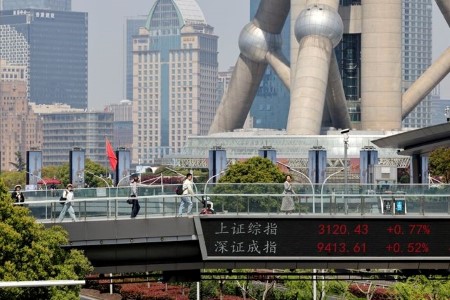




Policy Rate Updates: Closer to BSP’s Goldilocks moment
 DOWNLOAD
DOWNLOAD

Inflation Update: Speeds up but remains below target
 DOWNLOAD
DOWNLOAD

Monthly Economic Update: Fed back on track
 DOWNLOAD
DOWNLOAD


Foreign investors plough USD 19.2 billion into emerging markets in May, says IIF

NEW YORK – Foreigners added USD 19.2 billion to emerging market stocks and bonds in May after an April retrenchment, a banking trade group report found, with Chinese debt and ex-China stocks emerging as the most favored assets as the trade war temporarily cooled.
The May flows, as calculated by the Institute of International Finance (IIF), compare with a USD 3.7 billion outflow in April and a USD 6.6 billion inflow in May 2024.
Chinese debt took in USD 11.1 billion, while the country’s equities pulled in USD 1.4 billion. Outside of China, stocks funneled USD 7.0 billion – their first positive inflows after seven months of losses – while debt saw a USD 300 million outflow.
The Trump administration’s early April announcement of broad tariffs on imports, and subsequent delays to those while others were hinted or imposed, triggered a bout of volatility and risk aversion that hit emerging markets selectively.
Tariffs and trade remain high on the agenda as leaders of the G7 nations meet next week in Canada.
“The underlying investor tone remains cautious in light of ongoing global uncertainty,” said Jonathan Fortun, senior economist at the IIF, in a statement accompanying the data.
“The return of positive flows in May signals a modest shift in sentiment, but one that remains highly contingent on the global monetary backdrop. Investors are not abandoning EM, but they are rotating selectively within it.”
Asia took in a net USD 11.4 billion last month, much of which was absorbed by Chinese debt. Emerging Europe saw a net inflow of USD 5.1 billion, of which USD 3.9 billion came into debt portfolios.
Africa and the Middle East took in USD 1.6 billion, and Latin America came in last at USD 1.1 billion of portfolio inflows last month.
“Within the equity space, investors appear to be recalibrating exposure toward markets with credible domestic policy anchors and limited sensitivity to global supply chain disruption,” Fortun said.
Demand for local currency bonds remains high among non-residents according to the IIF report, especially in Asia, with market support in the form of real yields and stable monetary anchors.
Total emerging markets sovereign issuance remained low at USD 10.3 billion of new deals in May, according to the data.
“Much of the (debt) issuance came in the form of opportunistic deals from higher rated sovereigns. Market access continues to be limited for lower rated names, despite an improvement in global financial conditions,” Fortun said.
“The muted supply picture has reinforced technical support for existing debt and may explain the persistent bid for local paper.”
(Reporting by Rodrigo Campos in New York; Editing by Jan Harvey)
This article originally appeared on reuters.com





 By Reuters
By Reuters